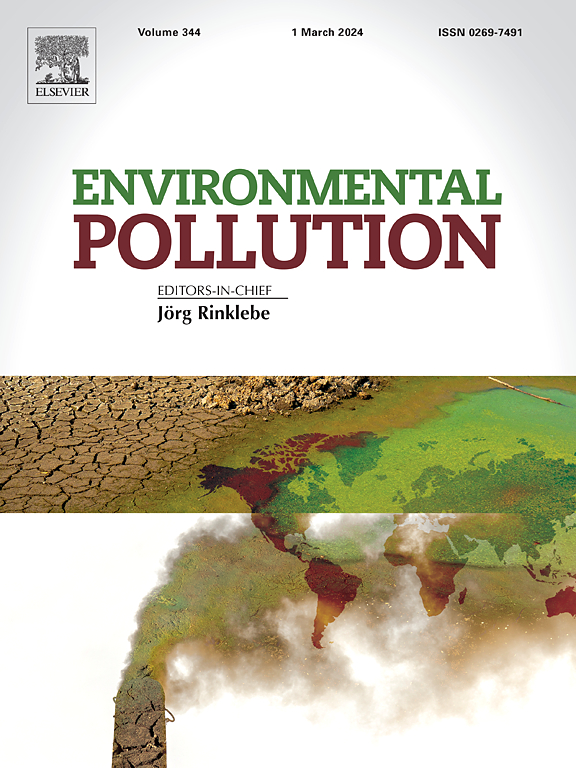COASTAL FRONTS AS INDICATORS FOR HOTSPOTS OF FLOATING MARINE DEBRIS
IF 7.6
2区 环境科学与生态学
Q1 ENVIRONMENTAL SCIENCES
引用次数: 0
Abstract
Floating marine debris (FMD) pollution is a considerable concern due to its negative impacts on valuable coastal marine environments. Frontal zones formed through various oceanographic processes are known to drive FMD distribution and abundance. Since fronts serve as aggregators of both FMD and marine organisms, the identification of coastal FMD accumulation zones in relation to fronts is imperative. Building on previous research on the relationship between frontal frequency and FMD density, this research aims to identify coastal FMD hotspots by examining not only frontal frequency but also processes influencing frontogenesis through statistical modelling of remote sensing data. This 10-year study (2002-2012) was conducted in the coastal waters of the northeast USA because of concurrent availability of real time FMD and satellite imagery datasets. The FMD dataset was collected by the Sea Education Association (North Atlantic), and sea surface temperature (SST) fronts were derived from daily MODIS nighttime SST (1 km x 1 km) using the Cayula and Cornillon histogram method. Concurrent remote sensing data on currents (direction and speed), Finite-size Lyapunov exponents (convergence) and bathymetry were also acquired. Of the nine logistic regression models, the four best fit models indicate that coastal fronts and their frontogenesis, including convergence, current directions and velocity, have a significant influence on FMD accumulation. FMD hotspots are identified as areas with the highest average probability of high density (above 500 pieces/km2) FMD accumulation. Results highlight feasible application of statistical model development based on the premise that fronts are used as indicators of FMD hotspots in coastal regions, areas of high biodiversity and economic value around the globe.

沿海锋面作为漂浮海洋垃圾热点的指标
海洋浮物污染由于其对宝贵的沿海海洋环境的负面影响而引起了相当大的关注。通过各种海洋学过程形成的锋面区被认为是口蹄疫分布和丰度的驱动因素。由于锋面是口蹄疫和海洋生物的聚集体,因此确定与锋面有关的沿海口蹄疫积累区是必不可少的。在前人研究锋面频率与口蹄疫密度关系的基础上,本研究旨在通过对遥感数据进行统计建模,研究锋面频率以及影响锋面形成的过程,从而识别沿海口蹄疫热点地区。这项为期10年的研究(2002-2012)是在美国东北部沿海水域进行的,因为实时口蹄疫和卫星图像数据集同时可用。FMD数据集由海洋教育协会(北大西洋)收集,海面温度锋由每日MODIS夜间海温(1 km x 1 km)使用Cayula和Cornillon直方图方法导出。同时还获得了关于电流(方向和速度)、有限尺寸李亚普诺夫指数(收敛)和测深的遥感数据。在9个logistic回归模型中,4个最佳拟合模型表明,沿海锋及其锋生(包括辐合、气流方向和速度)对FMD积累有显著影响。口蹄疫热点被确定为口蹄疫高密度(超过500个/平方公里)积累的平均概率最高的地区。结果表明,在以前沿作为全球沿海地区、生物多样性高地区和经济价值高地区口蹄疫热点指标的前提下,统计模型开发具有可行性。
本文章由计算机程序翻译,如有差异,请以英文原文为准。
求助全文
约1分钟内获得全文
求助全文
来源期刊

Environmental Pollution
环境科学-环境科学
CiteScore
16.00
自引率
6.70%
发文量
2082
审稿时长
2.9 months
期刊介绍:
Environmental Pollution is an international peer-reviewed journal that publishes high-quality research papers and review articles covering all aspects of environmental pollution and its impacts on ecosystems and human health.
Subject areas include, but are not limited to:
• Sources and occurrences of pollutants that are clearly defined and measured in environmental compartments, food and food-related items, and human bodies;
• Interlinks between contaminant exposure and biological, ecological, and human health effects, including those of climate change;
• Contaminants of emerging concerns (including but not limited to antibiotic resistant microorganisms or genes, microplastics/nanoplastics, electronic wastes, light, and noise) and/or their biological, ecological, or human health effects;
• Laboratory and field studies on the remediation/mitigation of environmental pollution via new techniques and with clear links to biological, ecological, or human health effects;
• Modeling of pollution processes, patterns, or trends that is of clear environmental and/or human health interest;
• New techniques that measure and examine environmental occurrences, transport, behavior, and effects of pollutants within the environment or the laboratory, provided that they can be clearly used to address problems within regional or global environmental compartments.
 求助内容:
求助内容: 应助结果提醒方式:
应助结果提醒方式:


